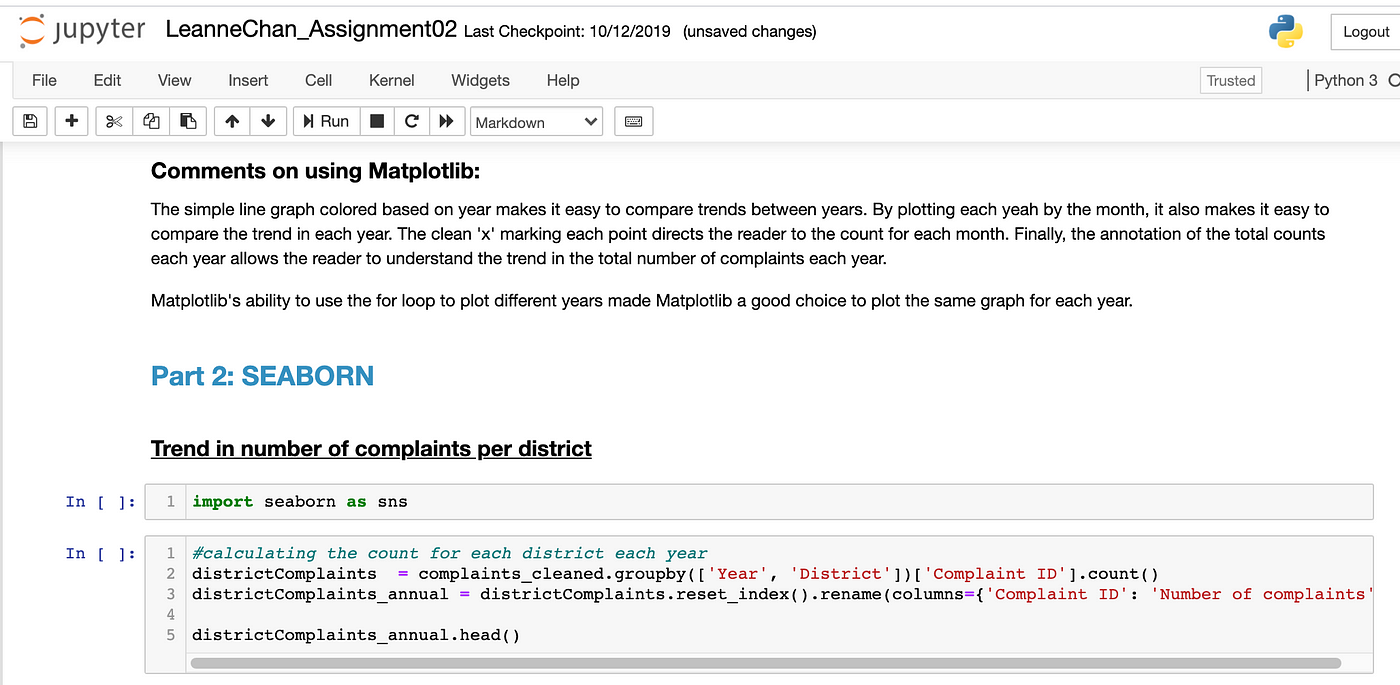

- #HOW TO INSTALL JUPYTER NOTEBOOK ON MAC HOW TO#
- #HOW TO INSTALL JUPYTER NOTEBOOK ON MAC GENERATOR#
- #HOW TO INSTALL JUPYTER NOTEBOOK ON MAC CODE#
- #HOW TO INSTALL JUPYTER NOTEBOOK ON MAC DOWNLOAD#
#HOW TO INSTALL JUPYTER NOTEBOOK ON MAC CODE#
Why? Because the most common mistake I’ve seen with Jupyter Notebook is code that refers to variables that are in memory but were renamed or deleted (either intentionally or accidentally) thereby breaking the code! How? Go to the file menu, then Kernel -> Restart & Run All Before turning in or sharing a notebook, it’s useful (and important) to restart the kernel and rerun all cells.Regularly save your Notebooks using ctrl-s (on Windows) or cmd-s (on a Mac).Hit shift-enter to execute the current cell.Please share your own tips and I’ll add them to this list. And, of course, we all often (accidentally or intentionally) intermix styles from other programming languages-this is especially true in this course as we toggle between so many languages. This will make your code easier to follow and debug. Please follow the Python style guide for variable and function naming conventions and other formatting. You could also consult this Datacamp tutorial or this Dataquest tutorial.Īgain, you will learn Notebook as you go through the lessons and work on your assignments. We’ll quickly demo Notebook in class but if you want to learn more, start by reading the official introduction to Jupyter Notebook ( link). There are many introductory tutorials and videos to Jupyter Notebook online.


#HOW TO INSTALL JUPYTER NOTEBOOK ON MAC HOW TO#
You can also access the TOC via the Navigate menu item.Įxample of TOC running in Jupyter Notebook How to use Jupyter Notebook Make some headers in markdown and then click on the Table of Contents button in the toolbar to see an auto-generated and clickable navigation sidebar. Click on Table of Contents (2) to configure and Enable it. Click on that tab and then you should see all nbextensions. Restart Jupyter Notebook and you should see a tab called Nbextensions on the home screen. Step 2: Open Jupyter Notebook and configure extensions > conda install -c conda-forge jupyter_contrib_nbextensions To install the nbextensions, open your terminal (on linux or Mac) or the Anaconda Prompt (on Windows) and type: Screenshot of a Jupyter Notebook with the nbextension called Table of Contents (2), which auto-generates a navigation pane based on markdown headers.įeel free to follow the official installation instructions here or our simplified version below: Step 1: Use conda to install nbextensions Second, it shows, which cells are queued for execution (in yellow in the navigation pane) and which cells are executing (in red). TOC2 provides two primary benefits: first, it auto-generates (and updates in real-time) a clickable table of contents based on the header markdown in the Notebook, which greatly simplifies navigation (you will want this).
#HOW TO INSTALL JUPYTER NOTEBOOK ON MAC GENERATOR#
We strongly recommend installing the jupyter_contrib_nbextensions notebook extensions, which contains a collection of community-contributed (unofficial) extensions for Jupyter Notebook, including a table of contents generator and navigation pane called Table of Contents (2). See “Running the Notebook” in the official Jupyter Notebook docs. Open your terminal (on linux or Mac) or the Anaconda Prompt (on Windows) and type:
#HOW TO INSTALL JUPYTER NOTEBOOK ON MAC DOWNLOAD#
Step 1: Download Anacondaĭownload and install Anaconda (latest Python 3 version) Step 2: Run the server

This is the officially recommended way to install and use Notebook ( link). Importantly, please use Anaconda to install Jupyter Notebook and all dependencies. To install, Jupyter Notebook, follow the installation instructions below (or read the official quickstart guide). Jupyter Notebook installation and configuration While Notebook supports multiple languages (like R, Julia), we’ll be using Python (specifically, Python 3). Jupyter Notebook is a popular data science platform for analyzing, processing, classifying, modeling, and visualizing data. We will be using Jupyter Notebook for the signal processing and machine learning portion of our course. Step 2: Open Jupyter Notebook and configure extensions.Step 1: Use conda to install nbextensions.Jupyter Notebook installation and configuration.This site uses Just the Docs, a documentation theme for Jekyll. L4: Feature Selection and Hyperparameter Tuning.


 0 kommentar(er)
0 kommentar(er)
